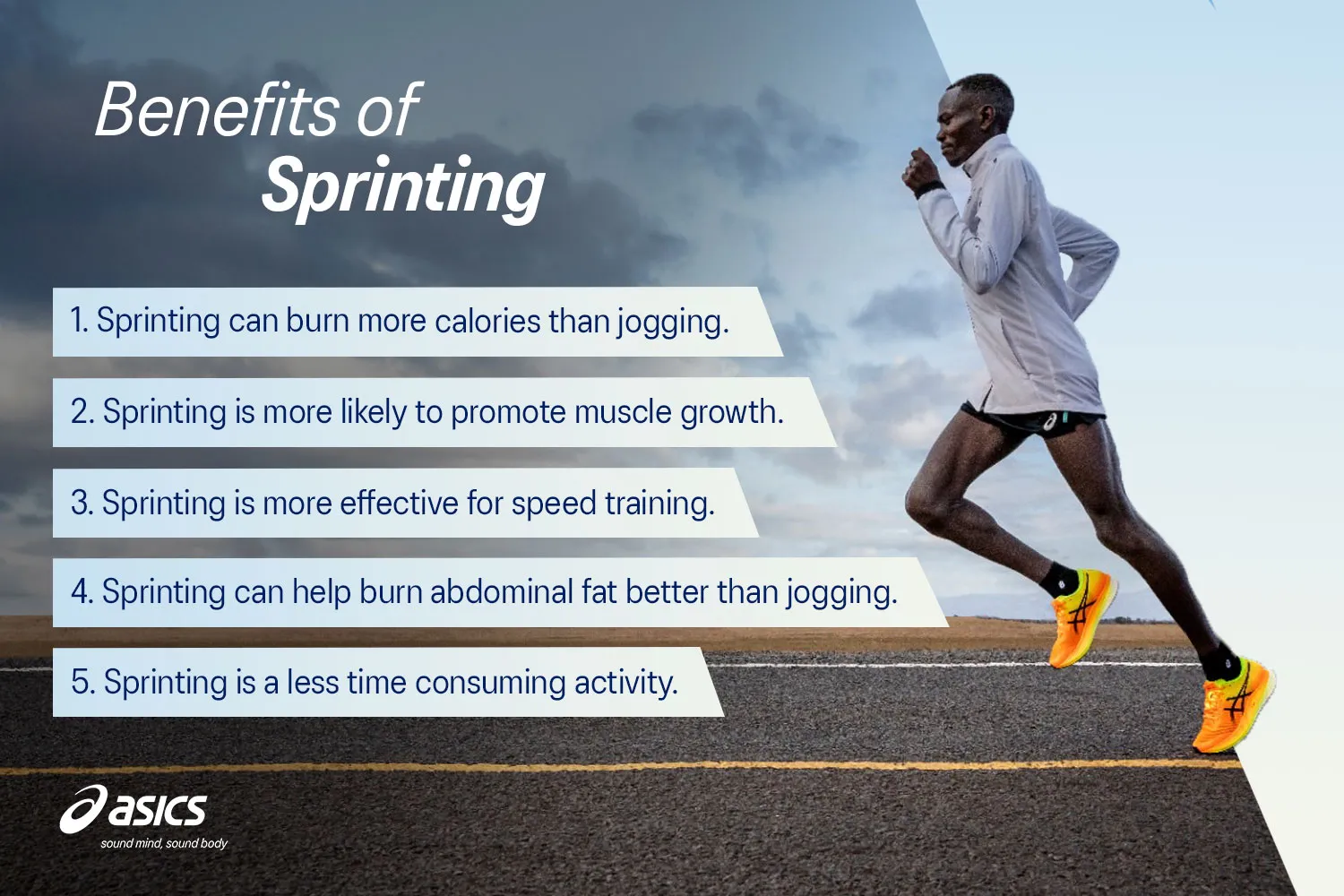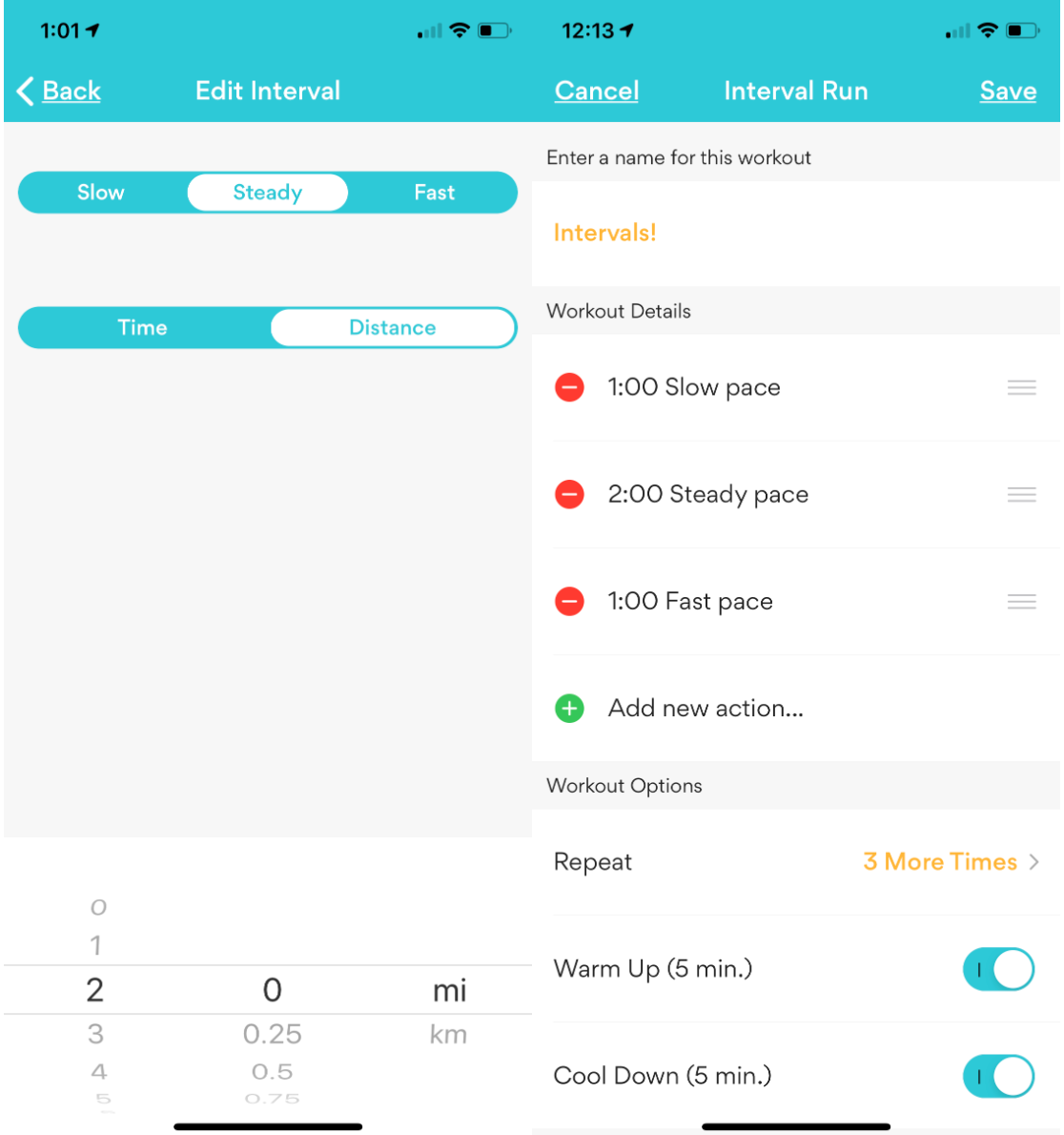
Sprinting vs. Jogging: Which Is Better?
May 2, 2023
What are the benefits of sprinting vs. jogging?
As a runner, you probably do both. And doing both, do you really know how to run sprints to get the most benefits of sprinting? Your goals and where you are in your running journey will determine which techniques and workouts are best for you.
What’s the difference between sprinting and jogging?
What is sprinting and how is it different from jogging or other kinds of running?
- Sprinting. Running at your maximum speed over a short distance or short time is a sprint.
- Jogging. Slow-paced running at a pace you can maintain for a long time without rest is considered a jog.
Comparing the benefits of sprinting vs. jogging
In the sprinting vs. jogging debate, which is most beneficial to your health and your performance? You might be incorporating sprint interval training into your runs, but what’s the right balance? Before looking at sprinting technique tips and recommendations for speed training shoes, let’s take a deeper look at the benefits of sprinting.
What are the benefits of sprinting?

1. Sprinting can burn more calories than jogging.
If losing weight matters to you, consider adding sprinting to your routine. A 30-minute jog can burn between 180 and 252 calories, while 30 minutes of sprinting can burn between 375 and 525 calories.
2. Sprinting is more likely to promote muscle growth.
You can add more lean muscle to your frame when you incorporate sprint interval training into your routine. You may not bulk up, but you’ll help strengthen your muscles.
3. Sprinting is more effective for speed training.
Learning how to run sprints can help improve your performance and increase your running speed . Sprinting benefits include it being a time-efficient way to boost endurance, power, and overall speed.
4. Sprinting can help burn abdominal fat better than jogging.
Studies have shown that the high-intensity nature of sprinting can be effective in reducing visceral and abdominal fat while also increasing your aerobic power.
5. Sprinting is a less time consuming activity.
Since you’re moving faster when you sprint compared to when you jog, you’re able to get your workout done in less time.
What are the benefits of jogging?
1. Jogging is a more accessible form of exercise for beginners.
For beginners, jogging is an easier way to build stamina, develop strength, and practice proper running form . Jumping directly into running sprints may make it hard to learn the fundamentals and establish a foundation for continued improvement.
2. Longer jogs are better for long distance run training than short sprints.
If covering longer distances is your goal, jogging is recommended. You’ll be able to train longer and go farther when jogging due to its more casual nature.
Tips on how to run sprints for beginners
Instead of thinking of sprinting vs. jogging, incorporate both into your training. These sprinting technique tips and ideas for gear can help you get the most from the workouts and learn how to sprint faster.
1. Invest in a pair of speed training shoes
Quality gear is vital to your performance and safety. While you don’t need special cleats or spikes for sprinting through your neighborhood, speed training shoes will provide lightweight spring and support you can’t get from regular sneakers. These speed training shoes have features to enhance your sprints.
Recommended ASICS shoes for speed training - METASPEED™ SKY+ . Take longer strides for a fast start and faster finisher. The midsole foam and propulsive carbon plate transfers more energy with each step so you can maintain a faster pace through the end of your sprint.
- MAGIC SPEED™ . For versatile performance on both sprints and regular training runs, this shoe propels your foot forward with a carbon forefoot plate that rolls your energy through your stride.
- NOOSA TRI™ 14 . Lightweight with a sock-like fit, this speed training shoe has a curved sole to conserve energy and promote a forward roll that propels you through your stride. If you are a triathlon runner, you will also appreciate the easy on and off tongue-pull tabs and toggle laces to up your performance.
2. Determine how you’ll incorporate sprinting into your training plan
To effectively incorporate sprint interval training into your workouts and get the benefits you want, you need to plan. A great tool for setting goals and planning workouts is the ASICS Runkeeper app. You can use it to personalise your training schedule, track performance and see your results.
Using the ASICS Runkeeper app sprint & interval training feature

The ASICS Runkeeper app sprint & interval training function is where you set up customised interval workouts that alternate high-effort sprints with low-intensity recoveries. You can break out of a plateau in your training and run faster, longer workouts. You can also try our guided speed workouts that combine tempo, fartlek, and intervals into your training.
3. Develop and follow a warm-up routine
Warming up before any type of workout can help improve your performance and may help prevent potential injuries. This is because it increases your muscle temperature and blood flow, allowing your body to effectively prepare for high-intensity exercise.
Light jogging in place will elevate your heart rate and gently increase your body temperature. Leg stretches, heel-toe drills for your feet and ankles, lunges and high-knee marching will set you up for a speedy workout.
4. Start slow and make gradual increases to speed and duration
Start slow when sprinting and gradually increase your speed as you build endurance. You can add more over time, but consider starting with six-second sprints with 30 seconds of rest, then building up from there. Make sure to keep them to high-intensity short bursts under 10 to 15 seconds to be true sprints.
5. Take time to recover in between sprints
The time between your sprints is just as important as the overall exercise. Active recovery can be a good choice after a sprint, as it has been shown to offer greater training benefits and help improve endurance.
Please note: This information does not contain or constitute medical advice or a medical opinion, and it is provided for informational purposes only. You should always consult a qualified and licensed medical professional prior to beginning or modifying any diet or exercise program.